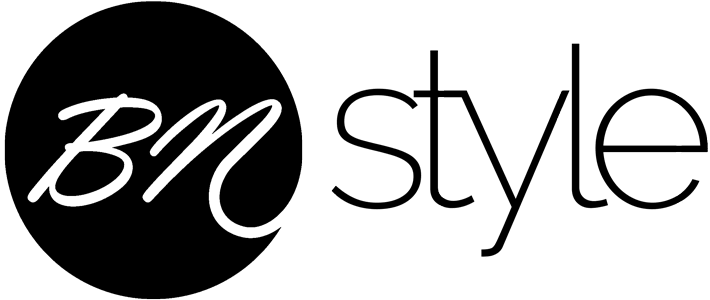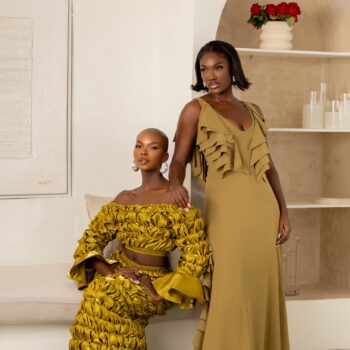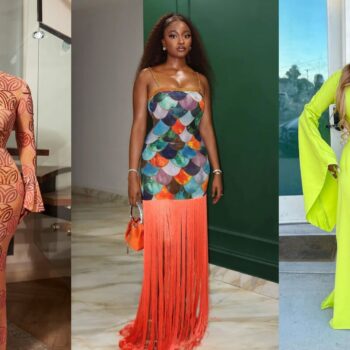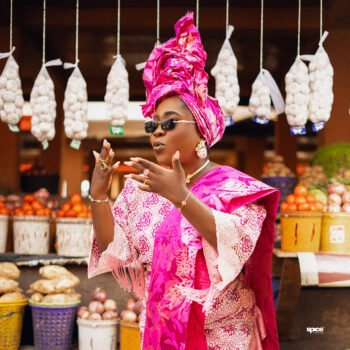Written by Edwin Okolo
In December 2018, Tosin Ogundadegbe waited quietly in a swamped hall at the Federal Palace Hotel. Seated around him were 104 sashed young people, all nominated for their extraordinary work in various fields for the 2018 Future Awards Africa. In a year of category heavyweights, Ogundadegbe was completely thrown when his name was announced as the winner. Completely overwhelmed by the moment and being honoured by living legend Deola Sagoe, Ogundadegbe gave a tearful, instantly viral acceptance speech.
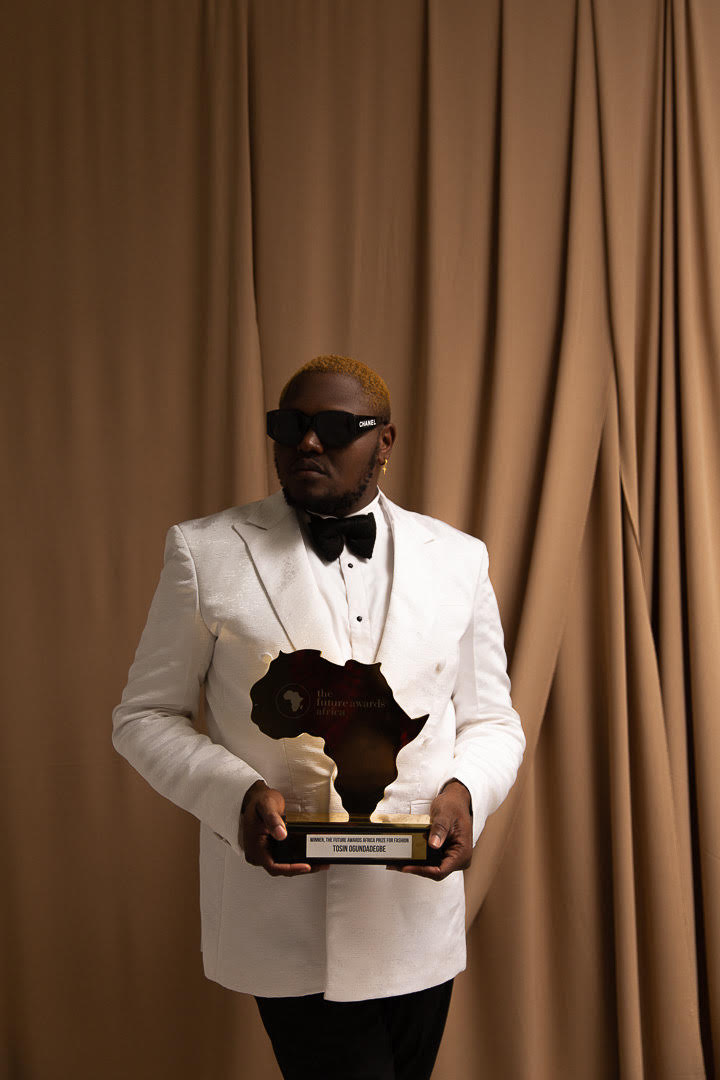
“It still hasn’t sunk in,” Tosin said of the moment, emotion clouding his voice. “I was nominated in the fashion category, by an organization that honours the most accomplished young people across industries. I was already overwhelmed that I was nominated, to go on and win in such a strongly contested category was humbling for me.”
This gives me a sense of how much there is to unpack in Tosin Ogundadegbe’s story; the story of how a boy from Ibadan studying philosophy, ends up on a stage at one of the country’s most prestigious award ceremonies, winning a Pan-African prize for fashion.
ROME HAS FALLEN LONG LIVE ROME!
There was a time when Nigerian designers and magazine editors were considered the creme-de-la-creme of fashion. They were feted at celebrity events and courted by the Nigerian bourgeoisie, desperate to be recognized as high society. The nostalgia that defines this era (circa 95 – 2012) fails to pass muster when held up to scrutiny. The complex machinery of artisans, stylists, models, writers and administrative interns who extended the reach of the old guard tell stories of vengeful gatekeepers, petty feuds, abuses of power and a deliberately narrowed path to promotion sandwiched between the fancy events splashed on weekly Sunday pull-outs.
As with all empires, Nigerian fashion’s ‘Golden Age’ has toppled under the weight of its own corrupt bureaucracy, leaving its wake small democracies of digital fashion consumers who choose and elevate their own leaders. Tosin Ogundadegbe is one of the leaders of this new politically correct, Insta-ready era of Nigerian fashion and his new influence has come hard-won.
He references his original fashion blueprint, the television adaptation of Candace Bushnell’s essay anthology, Sex and The City as a core inspiration for the whimsy expressed in his work and in his personal style. Darren Star’s television adaptation of Bushnell’s insightful work became a primer for a pre-teen Ogundadegbe, introducing him to a subversive, irreverent look at modern female life through a prism of feminism, fashion, and sexuality. Though he was surrounded for most of his adolescence by super stylish family members who encouraged his interest in fashion, his first break wouldn’t come till 2010, 12 years after the show’s groundbreaking first season.
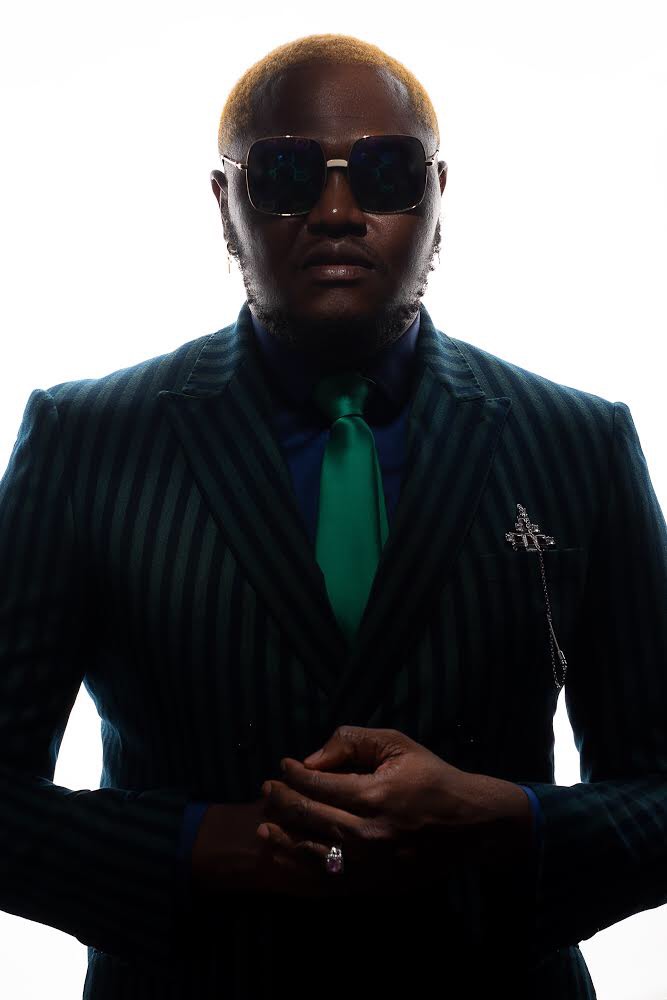
Created while he was at the Obafemi Awolowo University, his first fashion editorial ‘Under Construction’ caught the eye of very prominent fashion editors, leading serendipitously to an invitation from Latasha Ngwube to join an internship with ThisDay Style at the first Arise Fashion Week. It was she who christened him ‘Mr. Tosin from Ibadan’ as an inside joke about how woefully unprepared for his first foray into the frenzied heart of Lagos high fashion.
“I liked it because it told a compelling story about my hustle, that a passionate, gut-driven, willing to explore and open minded individual can get a break.” Tosin explains when I ask why he kept the name for so long, “I lived in Ibadan, my family lived in Ibadan, so I became that boy who came from Ibadan to make a living for himself.”
Latasha Ngwube might have given Ogundadegbe his first opportunity but it took a whole squad of cheerleaders to kick start his career. Adebayo Oke-Lawal was an early fan, putting in a word for him that got him his first paid column and early styling referrals. Designers like Moofa, Ejiro Amos Tafiri, Kola Kuddus, and Tosha Woods opened their archives to him for his image consulting work and commissioned him to style their runway shows and editorial campaigns long before his name began to open doors.
Like his icon Carrie Bradshaw, Ogundadegbe would move to the big City in 2014 to chase his dreams. He devoted a significant part of his early career to working as a fashion critic and commentator for Olisa TV, the multi-platform media business founded by radio veteran Olisa Adibua. Most of the bonafides with fashion journalists and critics that Ogundadegbe leverages today in the print and digital media industry were built through his column at Olisa TV.
“With Olisa TV, I enjoyed the freedom of writing my views about fashion with undiluted objectivity even though it came with some retribution, like being blacklisted from pulling garments from designer’s for my styling work.” Ogundadegbe admits he felt somewhat stifled in that role. Adibua has long-standing relationships within the industry, and subjects of his article would try to
leverage those relationships to get the column censored. But Ogundadegbe’s insightful commentary on the state of the industry was welcomed in an industry where people with influence were quick to take personal slight to professional critique. After three years of telling others what he wanted to see in the industry, Ogundadegbe left his role at Olisa TV in late 2017 to focus fully on getting things done on his own terms as the TheStyleInfideL.
TOSIN FROM IBADAN EXITS STAGE LEFT, ENTER THESTYLEINFIDEL
Not everyone can pinpoint out the exact moment they transitioned from an emerging talent to an established star. Tosin is one of the lucky few whose career defining moments have happened in the public eye. The first was in 2017, at the Soundcity MVP Awards; his muses were designer Samuel Noon, a former assistant turned designer and Adesua Etomi-Wellington long before her days as an A-lister. The dress was a structured peplum set in fire engine red that set the internet ablaze. The world applauded the genius of his matchmaking and overnight turned him into an in-demand stylist.
“The designer-stylist relationship is a symbiotic one.” He explains when I ask about that pivotal night. “Client referrals are one of the ways I leverage my influence into economic relevance for the brands & individuals and a stylist is a designer’s third eye, responsible for editing looks in ways that are not only artistic, but also appealing to buyers.”
The second was at the Future Awards Africa in 2018, a night he considers as an ascendancy of sorts. For years, he’d visited cybercafes to trawl through the pages of a nascent BellaNaija, gorging himself on the budding fashion industry chronicled in its web pages. He became intrigued by TFAA because of the diverse pool of people it honoured and felt slightly intimidated by their successes. Coming full circle to win the award was a supreme moment of recognition for him, legitimizing his position in the fashion industry as a whole and providing leverage to for him to be taken seriously as a brand.
A string of high profile clients serve as the most compelling evidence that Tosin Ogundadegbe subversive approach is working. He serves as head stylist for the Lagos Leather Fair and Fashion Finest Africa, curating their niche but eagerly anticipated runway shows. He also leads as head stylist for the GTB Fashion Weekend, working his way up under Ugo Mozie who helmed affairs for their first season and Bimbo Kofoworola who he co-chaired with for the second season.
As head stylist, he weighs the showcase’s themes each season and has creative freedom over the styling and runway choreography for the showcase’s presentations and runway and is expected to guide emerging designers who are spotlighted by the platform. His work extends beyond fashion week into off- season presentations and fashion editorials. These are only highlights in a portfolio that includes creative direction for the biggest fashion brands, art direction on advertising campaigns and editorials for fashion retailers and image consulting for some of the country’s biggest celebrities.
Setting up his consultancy, TheStyleInfidelStudios was a necessary resolution to keep his energies focused on delivering excellent work to his diverse clients. His structure is simple; junior stylists help execute briefs for personal and corporate clients under Ogundadegbe’s watchful eye. He stays hands-on, personally handling more difficult requests. A communications manager acts as a primary buffer between Ogundadegbe and clients, ensuring he is never overwhelmed with client requests or out of the loop on customer feedback.
“Just like every organization has a team running its affairs, TheStyleInfidelStudios has a functional team running business activities.” He explains, when I ask how the consultancy works, “Chairing as the head stylist and creative director comes with a lot of responsibilities which involves tedious research and strategic thinking to ensure we deliver excellently and that everyone is functioning to par.”
It seems a huge commitment to add to his whirlwind of obligations, but like everything else he’s taken on in the last decade, Ogundadegbe approached the consultancy with meticulous planning. It has taken some finessing to get the system working at peak productivity, but his willingness to give subordinates an opportunity to prove themselves is a personal trait he has come to appreciate as a strength.
I’m a firm believer that at some point on this journey, delegating duties is inevitable, so one doesn’t get to a point of exhaustion and lose the ability to create.
Not everyone can be Karl Lagerfeld and Tosin Ogundadegbe doesn’t want to be. Instead, he is devoting his hard-won free time to finally execute a personal project he has rarely had time for; himself.
During Nigeria’s fashion month, Ogundadegbe is his very own runway show, debuting looks in collaboration with a small retinue of established and emerging designers who indulge his newly expressed love of whimsical creations. He draws stares from designers, stylists, and guests; it is almost sacrilegious for a plus-size, 6 foot 3 man to layer on clothing in extravagant hues and expertly pull off ruffles and giant bows. There is a sense of anticipation, for some kind of misstep to reassert the pecking order. That never happens. Instead, he holds court with street style photographers, asserting himself as an alternative way to do fashion.
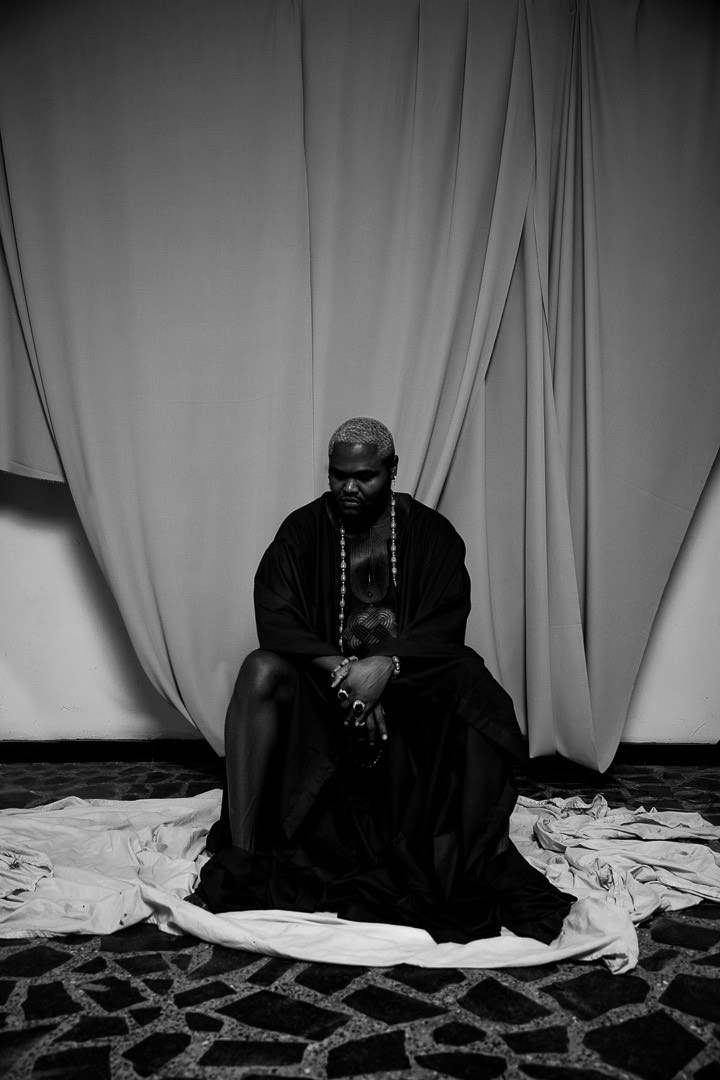
“It gives me so much joy and pleasure that the narrative is fast changing with mainstream fashion and many young people now boldly identify as image architects, stylists, and consultants.” He says, of the many emerging stylists following his lead by using collaborations to build their portfolios. “It’s impressive to see so many young people polishing their natural talent to build careers outside of fashion.”
His personal style has blossomed in the last two years, he is no longer interested in telegraphing emotional detachment through monochromatic outfits. Long term collaborations with Amaariol, Femi Toys, Moofa Designs, Rhobes Official and more recently David Wej, Mazelle Studios and King Daviid Shoes, birth maximalist looks that draw parallels with American Ball Culture, the decadence of the 90s and the ebullience 80s. Ogundadegbe has always drawn attention, but now it is because he actively courts it.
“I am still exploring the vast options and also playing around with everything and also letting people understand that fashion and styling is all about self-expression,” is how he responds when I ask about the diverse tableau of influences he is incorporating into this new online identity. “The end goal will be to let people know that whether plus size or not, it is okay to be expressive with style, it is okay to accommodate and welcome happiness through fashion.”
Not everyone understands where Tosin Ogundadegbe is going with this, and not everyone should have to. His primary audience for this ongoing project on self-expression is the growing fandom of plus-sized enthusiasts who follow his updates with religious fervour and show their appreciation through likes and comments.
“I wouldn’t say it began as an experiment.” He corrects me when I refer to his personal style as an experiment, “It was very intentional following the public misconceptions about plus-size folks not knowing how to dress.”
The misconceptions he speaks of are rooted in the industry’s fatphobic biases, which the audience he dresses for is intimately aware of. He is at peace with the inevitable pushback that will come from stretching beyond set expectations. His reasons echo the reality of our digital democracy; social currency matters and performative expression, while not as enduring as innate talent, is its own currency.
Visibility is a part of one’s progress report, it is not only important for self-assessment but also very vital for business. It is very easy to be left behind and get shut out of bigger opportunities in this cut-throat industry if one decides to hide behind the scenes forever.
LIVING LARGE, LIVING LOUD
“My biggest frustrations in the industry are stylists being undervalued, underpaid and denied appropriate credit for their work.” This is how Ogundadegbe summarizes much of his experience in the industry. As an ecosystem made almost entirely of independent creators, there has been a lot of impunity from designers and clients, who have been able to exploit the lack of communication or co-ordinated action to renege on contracts & underpay stylists and image consultants. He believes it’s time for the industry’s artisans and service providers to seriously consider unionization as a way to keep everyone in check.
“I am an advocate for a styling guild, more like a board where regulations and stylist interest can be catered for and to a large extent that would aid the standards of the profession.” He believes styling guilds haven’t happened because styling itself, like many aspects of fashion practice, is informal and without any kind of discernible academic or corporate structure. Most fashion professionals in Nigeria are self-taught, and Ogundadegbe believes that lack of formal education contributes greatly to the undervaluation of creative work. He is convinced proper tertiary education would be game-changing for how stylists and the fashion industry as a whole are perceived.
“I find it difficult to accept that fashion education hasn’t been incorporated into our educational system. To be a teacher one would need to go to a college of education to earn a degree, to be an artisan one would need to identify a technical school and also earn a degree. Why not fashion?” His new overt brand image is his own tailor-made response to that misconception, separating the informal following he has grown from his years writing for Olisa TV, his work as a creative director, and his jaunts as a TV critic from his professional consultancy. For years, both brands were treated as interchangeable, even by friends and business partners who ideally should know better. That has led to inconvenient situations where he was forced to assert himself to be taken seriously. As his brands diverge, there is a greater urgency now to differentiate the two.
“Both brands are client-focused businesses,” he tells me, “the only difference is in the range of services they offer. TheStyleInfidel Studios is an all-round concierge service, bringing diverse talent from various backgrounds to bring client ideas to life. TheStyleInfideL is the personality behind the brand and a rising fashion influencer.”
For years, Ogundadegbe tried to personally make that distinction to clients, friends and fans who flocked to the social media pages after discovering his work. Nothing seemed to work. That is, until he relinquished control of his own personal brand to Few VISIONARY.
Bolajo Fawehinmi the founder of the agency and Ogundadegbe are long time collaborators and started their careers in fashion at roughly the same time. Bolajo found fame much quicker, walking in the industry-defining inaugural Lagos Fashion Week and Arise Fashion Week showcases. Fawehimi is also a veteran of brand differentiation; she was one of the first Nigerian models to formally retire at the apex of her career, refocusing her brand on model management and distinguishing herself with excellent partnerships. Their partnership is already yielding results, funnelling enquiries through the VISIONARY machinery has
significantly reduced dead leads and opened him up to speaking engagements and a vibrant visual portfolio.
“I came onboard with Few Visionary for the sole purpose of ensuring that my brand and my business evolves. Bolajo Fawehinmi as a passionate businesswoman, she built her agency from scratch and she’s proven herself a formidable force by making the dreams everyday girls who dream of being top models come true season in and season out.”
There are many things Ogundadegbe hopes this new partnership will bring. He has considered trying out designing but feels he isn’t ready for that scale of commitment. He prefers to experiment with capsules, citing that his peculiar viewpoint already requires him to work closely with designers to create custom pieces.
He hopes he can share a wealth of experience through fashion education or fashion journalism with a new crop of young creatives just entering an industry vastly different from the one in which he started. Sure the fiefdoms are essentially dead, but this new industry, for all its opportunity, is cutthroat, and hypervisibility means that every misstep is relentlessly documented and referenced as evidence for future witch-hunting.
But his longest-standing conviction from his rise in the fashion industry is that longevity takes time, and he’s committed for as long as it takes to build a structure that compensates every player in the ecosystem and rewards longevity. He wants to preach the message of slow beginnings and tempering passion with caution. He wants to monetize his talents and image in a way that allows him to choose his future projects for now impractical concepts like artistic merit.
“I look forward to helping build an industry where I can outgrow my role as creative director of TheStyleInfidelStudios, retire and appoint a new creative director. Until my focus is on building an industry and a business that thrives within that industry.”
